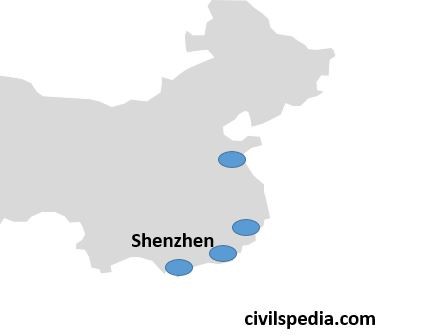Last Updated: June 2025 (Indian Three Stage Nuclear Program)
Indian Three Stage Nuclear Program
This article deals with ‘Indian Three Stage Nuclear Program.’ This is part of our series on ‘Science and Technology’ which is an important pillar of the GS-3 syllabus. For more articles, you can click here
Introduction

- Homi Bhabha formulated India’s 3-Stage Nuclear Program.
- The reason for the formulation of this program was that India has the largest source of Thorium and modest deposits of Uranium. Considering this fact, Dr Homi Bhabha envisioned 3-Stage Nuclear Program in 1954. It aimed to secure India’s long-term energy independence by using Uranium and Thorium reserves found in the Monazite sands of coastal India.
- Note: India has only 1-2% of the global Uranium but about 30% of the world’s Thorium.
Stage 1
The first stage involves the utilization of Pressurized Heavy Water Reactors (PHWR) fuelled by natural Uranium. In this stage, natural Uranium is used as a fuel, and heavy water (deuterium oxide) is used as a moderator and coolant. India has built several PHWRs, which generate electricity and produce plutonium-239 as a by-product (to be used as fuel for the next stage.)
Overview
Reactor
- Pressurized Heavy Water Reactor (PHWR)
Fuel used
- Natural Uranium (Note: It is not enriched. Just Natural Uranium is used.)
Moderator and coolant
- Heavy Water (D2O/Deuterium Oxide)
Reaction
Main Reaction (Energy)

Other (to get Pu -239)

Process explained
- Natural Uranium contains both U-238 and U-235 in the following proportions.

- In Nuclear Reactor, when a slow-moving Neutron is bombarded on the Uranium fuel, it collides with and splits U-235 nuclei, thus releasing a large amount of energy and 3 neutrons. The production of 3 neutrons helps in making it a chain reaction.
- Some of the neutrons will get absorbed into U-238, thus converting it into Pu-238 (Plutonium-238, which is fissile). Pu-238, thus generated, acts as fuel in the second stage.
Pressurized Heavy Water Reactor

Why is Heavy Water is used as Moderator?
- A moderator in the form of Heavy Water is used to decrease the speed of neutrons produced in the nuclear reaction because it increases the probability of fission with Uranium-235, even though its proportion is just 0.7% in natural Uranium.
- Heavy water slows down neutrons by their repeated collisions with neutrons.
Control Rods
- To reduce the power level or to shut down the reactor, the reaction rate is lowered by decreasing the number of available neutrons. It is achieved with the help of control rods like Boron or Cadmium Rods, which can absorb the neutrons.
The operator of PHWR or First Stage of the Indian Nuclear Program
- PHWR is operated by NPCIL or Nuclear Power Corporation of India Limited.
- Almost the entire base of Indian nuclear power is composed of stage 1 PHWRS except for the two Boiling Water Reactors (BWRs) at Tarapore.
Stage 2
Fast Breeder Reactor

Overview
The second stage focuses on utilizing Fast Breeder Reactors. FBRs use Plutonium-239 obtained from the spent fuel of PHWRs as the fuel and liquid sodium as the coolant. These reactors can generate more fissile material (Plutonium-239) than they consume. Thorium would be added to the fuel cycle once sufficient stock had been amassed to transform it into uranium 233 for the third stage.
Reactor
- FBR (Fast Breeder Reactor )
Fuel used
Mixed oxide (MOX) fuel (received from first stage) consisting of
| Pu-239 | Undergo fission to produce more energy |
| U-238 | Undergo change to additional Pu239 |
Moderator
- FBR doesn’t use a Moderator, as only fast-moving neutrons produce extra neutrons on collision with Pu-239.
Coolant
- Liquid Sodium
Crucialties of Stage 2
Further, 2nd stage is crucial for 3rd stage as it converts Thorium-232 (which occurs naturally) into Uranium–233 by transmutation
- Once there is a good reserve of Pu-239, Th-232 is introduced at the periphery of the core (blanket material).
- The collision with neutrons will convert Th-232 to U-233 (which is fissile).
Stage 3
Thorium Based Reactors

The program’s third and final stage involves deploying Advanced Heavy Water Reactors. AHWRs are designed to use a mix of Thorium-232 and Uranium-233 (obtained as a by-product from 2nd stage) as fuel. Additionally, The Th-232 will be placed at the periphery of the Core fuel, resulting in additional U-233 fuel.
It’s important to note that while India has made significant progress in the first two stages, the third stage of the program is still in the developmental phase, and commercial deployment of AHWRs is yet to take place.
Thorium as Nuclear Fuel
India & Thorium
- India has the largest reserve of Thorium in the world and consists of 30% of the world’s Uranium reserves
- Main Indian reserves include
- Monazite beach sand in Kerala
- Found in Andhra (largest producer), Tamil Nadu, Odisha, Kerala and West Bengal
Advantages
- Thorium is more abundant (4 times more) than Uranium in the Earth’s crust.
- Thorium consists of a single isotope, Th-232, unlike Uranium. Hence there is no need for the isotope separation.
- Thorium-based fuels have favourable physical and Chemical properties that improve the reactor’s performance. These include
- Higher melting point
- Higher thermal conductivity
- Low coefficient of thermal expansion
- Greater chemical stability
- Doesn’t further oxidise
- The long-term radiological hazard of Uranium based nuclear fuel, dominated by Plutonium and other Actinides is not there in Thorium based fuel.
Disadvantages
- No fissile isotopes in natural Thorium
- The high sintering temperature required to make Thorium Oxide
- Long interval over which Thorium 232 breeds to Uranium 233


















